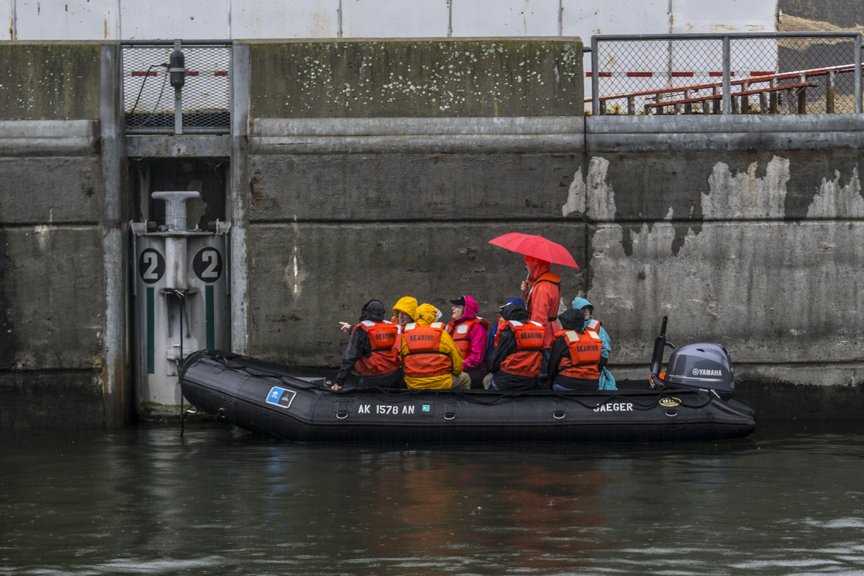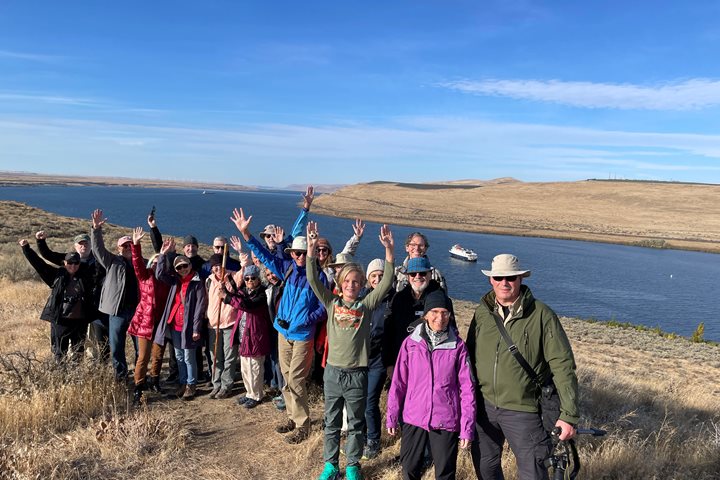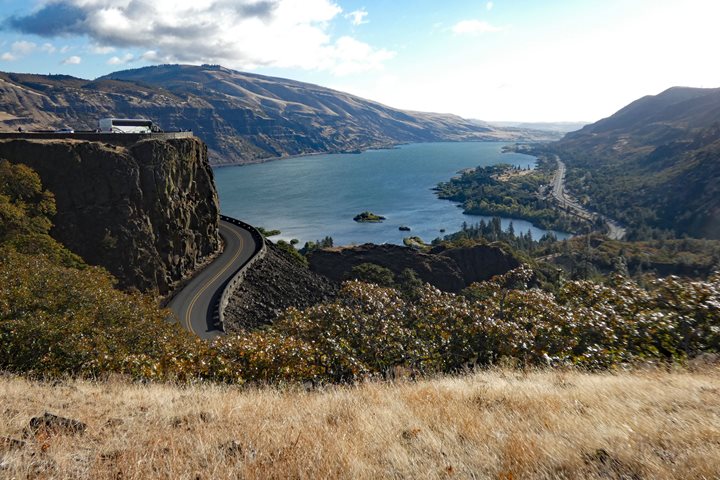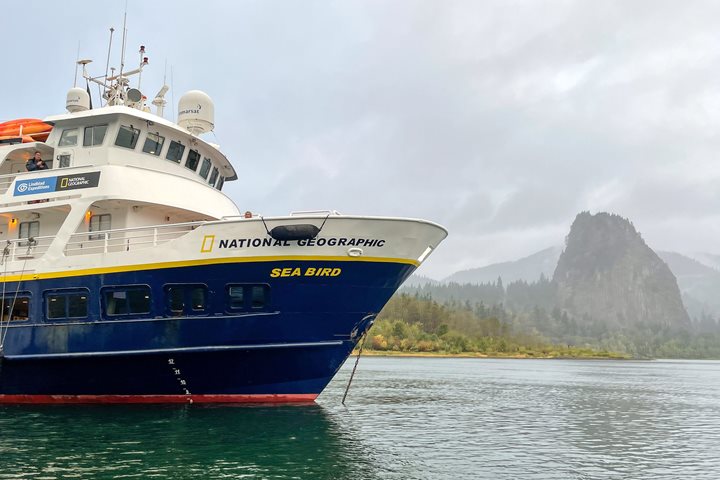Today we travelled through southeastern Washington. This country seems always desolate, dry and snaky, but therein lies a large part of its charm. And it holds many a hidden gem, a few of which we uncovered.
In the morning we stopped at the mouth of the Palouse River. Soon we were headed ashore, to take a quick bus ride up to Palouse Falls. The main waterfall drops like a hoary ribbon almost 200 feet. Impressive though this is, the waterfall is dwarfed by the well-like plunge pool into which it drops. The pool was carved not by the falls, but by the horrendous Ice Age floods that shaped much of this region.
Meanwhile, others were seeing the lower reaches of the Palouse, inundated by Lower Monumental Dam on the Snake River. From our rubber boats we saw cattails and tules, and the work of beavers and porcupines. Unexpectedly, this is the location of one of North America’s most important archaeological site. At the Marmes Rock Shelter, evidence of 11,000 years of activity was found, including some of the oldest human remains found on this continent! The weather was unusually wet, so the birds of prey were taking the day off, but we saw grebes and coots, ravens and a few magpies. Elsewhere, a few people paddled about the lower Palouse in kayaks.
Back on the Snake River, we approached Lower Monumental Dam. Finished in 1969, this dam is like most on the Snake—more modern than most people assume. For a bit of a change of pace, we dropped a couple of rubber boats and some went through the lock with an intimate perspective. No matter one’s point of view, the lock, at a hundred feet one of the world’s highest, is very impressive.
Below the lock we saw the dam’s many parts—the spillway and the powerhouse. But perhaps of greatest interest were the fish-ladders. Surprisingly, it is not upstream migration, but downstream migration of young fish that is a problem. We saw the complicated pipes that carry salmon fry away from the powerhouse turbines to safe water below the dam. Some piped fish are loaded into barges for a quick ride to the sea. Nevertheless, salmon on the Columbia and Snake Rivers are in dire shape, and some sober-minded people believe that removing some of the dams will save the salmon and provide greater economic benefit for the region.
For the rest of the afternoon we travelled downstream, through more locks, at last to the Columbia. From here we shall roll on to the sea!









